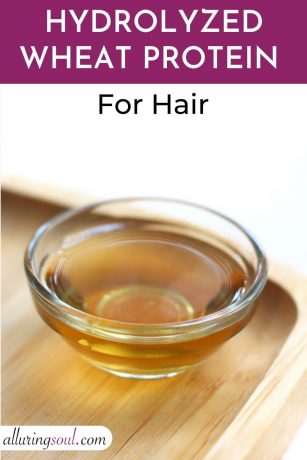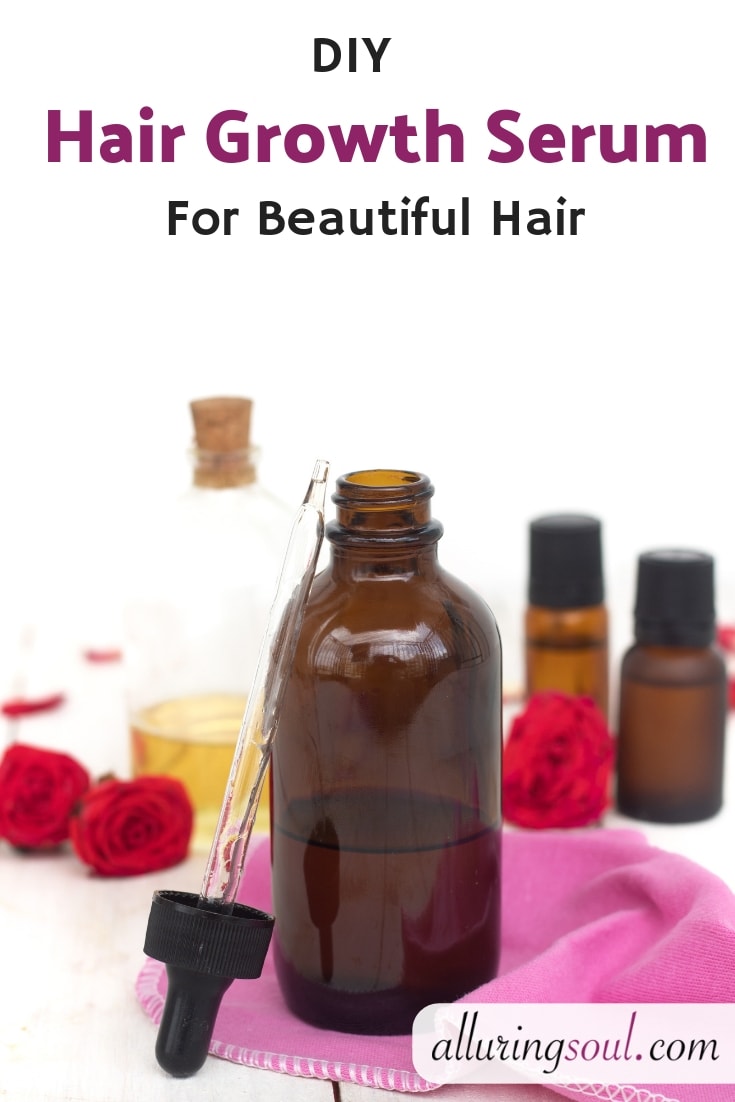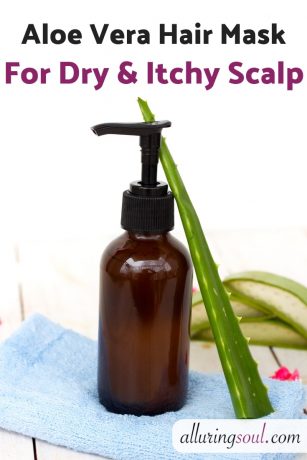If your hair feels dry, brittle, or slow to grow, it’s time to give it some deep nourishment with this DIY Rosemary Leave-In Hair Conditioner. This rich yet non-greasy formula is designed to moisturize, strengthen, and promote healthy hair growth — all while leaving your hair soft, shiny, and manageable.
Made with a luxurious blend of mango and kokum butter, this conditioner deeply hydrates and seals in moisture, while BTMS-50 provides silky smoothness and detangling benefits. The addition of safflower, coconut, and castor oils helps repair dryness and reduce breakage, while rosemary and tea tree essential oils naturally stimulate hair growth and maintain a healthy scalp.
Lightweight, creamy, and soft, this DIY rosemary leave-in conditioner is perfect for anyone dealing with dry, frizzy, or slow-growing hair, offering lasting softness, shine, and strength from root to tip.
Let’s take a look at the hair benefits of ingredients used in making DIY Rosemary Leave-In Hair Conditioner for Dry & Damaged Hair.
Benefits Of DIY Rosemary Leave-In Hair Conditioner for Dry & Damaged Hair (Hair Growth Recipe)
Mango Butter
- Deeply moisturizes dry and brittle hair, leaving it soft and manageable.
- Rich in vitamins A, C, and E, which protect hair from breakage and environmental damage.
- Helps seal moisture into the hair shaft, preventing dryness and frizz.
- Adds natural shine and improves elasticity, reducing split ends.
- Lightweight texture ensures the conditioner feels non-greasy and smooth.
Kokum Butter
- Strengthens hair strands and improves elasticity to reduce breakage.
- Excellent for locking in moisture without weighing hair down.
- Rich in essential fatty acids, it nourishes and revitalizes dry or damaged hair.
- Helps repair the scalp barrier and supports overall hair health.
- Adds structure to the conditioner, giving it a creamy yet stable texture.
BTMS-50
1. What Is BTMS-50?
- BTMS-50 (Behentrimonium Methosulfate) is a natural, plant-derived conditioning emulsifier made from rapeseed oil.
- It’s a cationic (positively charged) ingredient, meaning it naturally binds to the negatively charged surface of your hair strands. This bond gives hair that soft, smooth, and silky texture that makes detangling easy and reduces frizz.
- BTMS-50 is more than just an emulsifier — it’s a conditioning powerhouse that transforms any butter or oil blend into a lightweight, salon-quality product.
2. Why Add BTMS-50 to an Anhydrous Leave-In Conditioner?
Even though BTMS-50 is usually used in emulsions (oil + water), it plays a very special role in anhydrous (no-water) leave-in conditioners like this one.
| Reason | Explanation |
|---|---|
| 1. Provides Intense Conditioning Without Water | Unlike regular emulsifiers, BTMS-50 actively conditions hair. It deposits a thin, conditioning layer on the hair shaft even without water, leaving hair silky, soft, and frizz-free. |
| 2. Adds Slip and Detangling Power | Makes combing easier by reducing friction between strands — ideal for curly, coily, or tangled hair types. |
| 3. Creates a Creamy, Non-Greasy Texture | Without BTMS-50, your anhydrous formula would feel heavy or waxy. BTMS-50 turns solid butters and oils into a smooth, creamy, spreadable conditioner that melts beautifully into hair. |
| 4. Improves Product Stability | BTMS-50 helps blend oils and butters uniformly, preventing separation and giving the conditioner a whipped, stable texture. |
| 5. Long-Lasting Results | Since BTMS-50 bonds to the hair, its conditioning effect lasts until your next wash — keeping hair smooth and manageable longer. |
3. Why You Should Not Skip BTMS-50
Many DIY crafters try to make leave-in conditioners with just oils and butters, but without BTMS-50, you’re not actually creating a true conditioner — you’re just applying a hair butter.
Here’s why BTMS-50 is non-negotiable:
- Without it, your product won’t detangle or soften hair effectively.
- It ensures your leave-in is non-greasy, lightweight, and easy to spread.
- It gives your conditioner that professional, silky finish like salon products.
- It allows oils and butters to coat the hair evenly, rather than sitting on top and making it greasy.
- It helps hair retain moisture longer, especially for dry, frizzy, or curly hair.
Safflower Oil
- A lightweight, fast-absorbing oil that hydrates hair without greasiness.
- Rich in vitamin E and linoleic acid, it helps restore shine and smoothness.
- Strengthens the hair follicle, promoting healthy, faster growth.
- Helps prevent breakage and split ends by improving elasticity.
- Ideal for balancing richer butters in the formulation.
Coconut Oil
- Penetrates deep into the hair shaft to reduce protein loss and strengthen strands.
- Helps smooth frizz, seal in moisture, and protect against dryness.
- Provides natural antimicrobial benefits, supporting scalp health.
- Adds luster and softness while protecting hair from environmental damage.
Castor Oil
- Known for its hair growth-boosting properties — stimulates the scalp and strengthens roots.
- Thick, nutrient-rich oil that helps repair damage and prevent breakage.
- Contains ricinoleic acid, which improves scalp circulation and promotes healthy growth.
- Adds shine and moisture, especially to dry and coarse hair types.
Vitamin E Oil
- A powerful antioxidant that protects hair and scalp from oxidative stress.
- Strengthens follicles, promoting healthier, more resilient strands.
- Helps improve circulation in the scalp for better growth.
- Keeps the oils fresh longer by preventing oxidation in your DIY blend.
Rosemary Essential Oil
- Stimulates blood flow to the scalp, promoting stronger and faster hair growth.
- Helps reduce hair thinning and premature shedding.
- Has antimicrobial properties that support a healthy, clean scalp.
- Encourages thicker, shinier hair over time.
Tea Tree Essential Oil
- Cleanses and purifies the scalp, preventing dandruff, itchiness, and buildup.
- Improves scalp circulation to encourage healthy hair growth.
- Keeps hair follicles clear and strong, reducing hair fall.
- Balances oil production, keeping scalp hydrated but not greasy.
How To Make DIY Rosemary Leave-In Hair Conditioner for Dry & Damaged Hair (Hair Growth Recipe)

- 40g Mango Butter
- 20g Kokum Butter
- 10g BTMS-50
- 14g Safflower Oil
- 10g Coconut Oil
- 5g castor oil
- 0.5g Vitamin E Oil
- 7 drops Rosemary Essential Oil
- 5 drops Tea Tree Essential Oil
- Fill a pot with 1–2 inches of water. Place a heat-safe glass bowl on top, ensuring it doesn’t touch the water.
- Add heated oil phase ingredients into the bowl. Gently melt over low heat, stirring occasionally until smooth.
- Once melted, remove from heat.
- Let the mixture cool slightly until it begins to thicken but is not solid, around room temperature or cooler. Or you can keep it in the refrigerator for about 30-40 minutes until the mixture becomes soft, thick, and opaque.
- Use a hand mixer or stand mixer to whip the mixture for 5–7 minutes until fluffy and creamy.
- Now, add cool-down phase ingredients. Whip again briefly to incorporate.
- Spoon into a clean, airtight container. Store in a cool, dry place.
- Gently wash and towel-dry your hair until it’s slightly damp — not soaking wet. Damp hair absorbs the conditioner better and locks in moisture.
- Take a pea-sized amount for short hair or a dime-to-quarter-sized amount for longer or thicker hair.
- Rub the conditioner between your hands until it softens and melts into a smooth, creamy texture. This ensures even application.
- Focus on the driest parts of your hair — usually the mid-lengths and ends. Avoid the roots unless your scalp is very dry.
- Use your fingers or a wide-tooth comb to spread the conditioner through your hair and detangle gently.
- You can air-dry your hair for a natural look or use low-heat tools if you prefer styling.
- Apply a tiny bit to dry hair whenever needed to tame frizz, add shine, and refresh moisture.
- Use 2–3 times a week for normal to dry hair, or daily for very dry, curly, or coarse hair types.
2. Use 1–2 times per week, depending on your hair’s needs.
3. Don’t apply directly to the scalp unless treating dryness. It may clog pores and make roots oily.
4. Don’t use high heat immediately after application. Heat can damage hair and reduce the conditioner’s benefits.
5. Store in a cool, dry place to maintain texture and consistency.
6. Always do a patch test before using any DIY products.

Frequently Asked Questions
| Question | Answer |
|---|---|
| 1. Can I use this leave-in conditioner every day? | Yes! This natural leave-in conditioner is gentle and nourishing enough for daily use, especially for dry, curly, or frizzy hair. If you have fine or oily hair, apply it 2–3 times a week or just to the ends to avoid buildup. |
| 2. Should I apply it to wet or dry hair? | It works best on clean, damp hair right after washing. Applying it to damp hair helps seal in moisture and keeps hair hydrated for longer. You can also use a tiny amount on dry hair to smooth frizz or refresh shine. |
| 3. Do I need to rinse it out? | No, this is a leave-in conditioner, so it stays on your hair. It keeps your strands hydrated, frizz-free, and soft until your next wash. |
| 4. Will this make my hair greasy or heavy? | Not if used correctly. Thanks to BTMS-50 and light oils like safflower oil, the formula feels creamy yet non-greasy. Always start with a small amount and build up only if your hair feels dry. |
| 5. Can I use this conditioner on my scalp? | You can lightly massage it onto the scalp if you have a dry or flaky scalp, especially since rosemary and tea tree oils promote scalp health and growth. However, avoid over-applying to prevent buildup. |
| 6. Why is BTMS-50 added to this recipe? | BTMS-50 is a conditioning emulsifier that makes hair soft, detangled, and smooth. In this anhydrous recipe, it turns rich butters and oils into a lightweight, creamy conditioner that absorbs easily. Without BTMS-50, the product would feel greasy and less effective. |
| 7. Can I skip BTMS-50 or replace it? | It’s not recommended to skip it. Without BTMS-50, you’ll lose the conditioning, detangling, and smooth texture this ingredient provides. There’s no perfect substitute that performs the same way in leave-in conditioners. |
| 8. How long does this leave-in conditioner last? | It lasts 6 months if stored in a clean, airtight jar away from heat and sunlight. Vitamin E helps slow oxidation and keeps oils fresh longer. No preservative is needed since it’s an anhydrous (no-water) formula. |
| 9. Why is my leave-in conditioner too hard or too soft? | If it’s too hard, try adding more safflower or coconut oil. If it’s too soft, increase the kokum butter slightly. Room temperature and climate also affect consistency, so store it in a cool place if it’s warm. |
| 10. Does this conditioner promote hair growth? | Yes! It contains rosemary essential oil, which improves scalp circulation and stimulates hair follicles, and castor oil, which strengthens roots and promotes thicker growth. Regular use helps reduce breakage and encourages healthier, longer hair. |
| 11. Can I use this on color-treated hair? | Absolutely. All ingredients are gentle and natural, making them safe for color-treated or chemically processed hair. They help restore shine, moisture, and softness lost due to treatments. |
| 12. Can I replace rosemary or tea tree essential oil? | Yes! You can swap rosemary for peppermint (for scalp stimulation) or lavender (for soothing). Tea tree can be replaced with cedarwood or eucalyptus oil if you prefer different scents or benefits. |
| 13. Is this leave-in suitable for all hair types? | It’s especially beneficial for dry, damaged, curly, or frizzy hair. Those with fine or straight hair can still use it lightly on the ends for shine and smoothness. |
| 14. Can I use this before heat styling? | It offers mild protection since the oils form a moisture barrier, but it’s not a full heat protectant. For high-heat tools, use a dedicated heat-protectant spray. |
| 15. How much should I use per application? | Start with a pea-sized amount for short hair or a dime-sized amount for longer hair. You can add a bit more if your hair is very dry or coarse, but avoid over-applying to prevent buildup. |
| 16. Why does my conditioner feel grainy? | Graininess occurs when butters (like kokum) cool too slowly and form crystals. Re-melt the mixture, cool it quickly in the fridge to a slushy stage, and re-whip for a smooth texture. |
| 17. Can I make this without essential oils? | Yes! The essential oils are optional. You can omit them for sensitive scalps or add mild ones like lavender for a gentle scent and soothing benefits. |








